by Brandon Yap
Here’s a project I built a few years back now. I wanted to build a UPS for the fun of it, so I did. It turned out to be a very educational experience. It taught me a lot of things about batteries and electricity.
Requirement: A scaleable UPS which is not too expensive and would run for over an hour, ability to add more batteries as required.
Problem: Off the shelf UPS’s are too expensive for the given runtime.
Solution: Purchase commodity parts seperately and build one.
Budget: Under $1000
The Battery
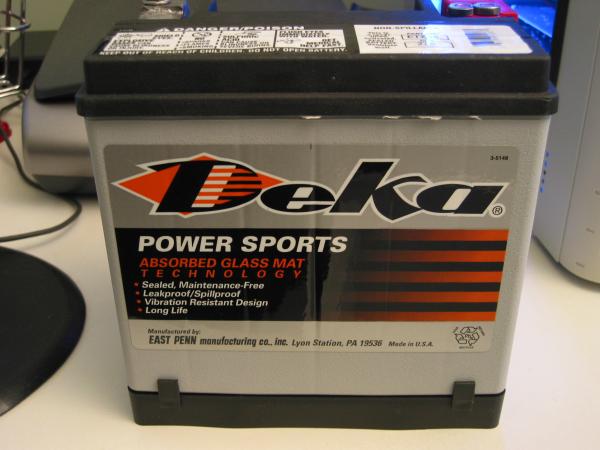
This battery is manufactured by East Penn Manufacturing in Pennsylvania and is part of their Deka range of batteries. It’s got a rating of 19 amp hours and was designed as a sports battery for various type of enthusiast vehicles such as jet ski’s. 19 amp hours means that the battery will last 19 hours if 1 amp is drawn per hour. The cost was $210 from Battery World.
Originally I had wanted a deep cycle battery due to the way the battery was to be used, and that’s being charged then drained in the event of a power failure. Deep cycle batteries are rated for up to 12,000 discharge/recharge cycles. TRUE deep cycle batteries are rare and the only proper deep cycle battery that Battery World stocked was an Oddysey battery. It turns out that a deep cycle battery wasn’t needed after all as normal sealed lead acid (SLA) batteries are capable of around 50 cycles (meaning recharge/discharge cycles). An good example of deep cycle battery use would be solar applications where say a garden lamp would charge during the day and drain every single night.
Say for example that if an average household receives 1 power outage per month that manages to drain the entire battery (which very rarely happens), the little Deka would last you around 4 years. That’s a heck of a lot of protection from a $210 battery. You can also hook up these batteries in parallel to have a crazy amount of excess battery capacity if you’re feeling paranoid. Not only can you power your server and or computer during an outage, but you can cook your dinner and run the portable spa too. Portable SLA batteries and an interverter give you a lot of flexibility for your power needs.
The Power Supply
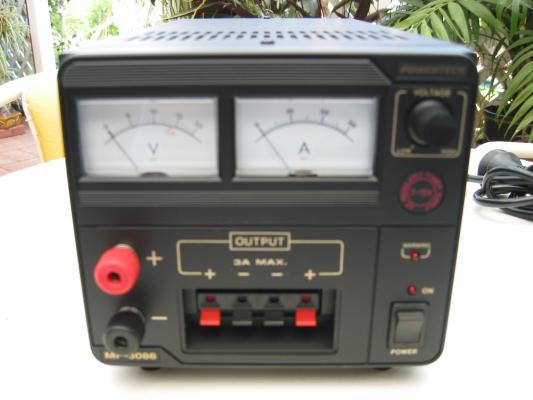
Sorry about the slightly blurry photo, I forgot to put the camera into macro mode before taking the shot.
The power supply chosen to charge the battery is a 25 amp 3 – 15 volt variable regulated power supply. All batteries have a certain float voltage setting meaning that you can set the charger to the voltage, and leave it connected forever without frying the battery. Every few months tho, it helps to top up the battery with an extra charge of 2.4 volts per cell. The cost is $359 from Jaycar.
The Inverter
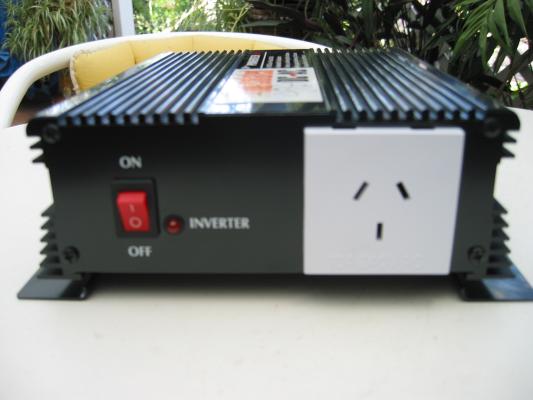
Inverters are wonderful toys. They convert DC current to AC enabling you to use any appliance that you’d normally plug into a household AC socket. How long it lasts tho depends on the capacity of your battery. A modest sized kitchen TV i’ve got consumes around 48W. Wattage = Volts x Amps and if my calculations are correct, the battery should last 3.8 hours. The inverter used in this project is rated at 600 watts continuous (1500W surge) and features an efficiency in excess of 85%.
$299 from Jaycar.
Putting the Ghetto UPS together
Now we put all the components together.
The power supply is connected to the wall socket and to the battery in parallel using cables rated for 25 amps. The battery is then connected to the inverter via the supplied alligator clamps (or one day cables for neatness, it’s really looking like Frankstein now!) once again in parallel. Once this is done, you can measure the voltage of the circuit on the power supply readout, and this will tell you the amount of remaining power left in the battery.
The computer was then connected to the inverter via a normal IEC power cable and powered on. Viola! A UPS worthy of Dr Frankstein himself.
This baby will last about 2 hours, and if your power needs grow, hook up more batteries.
Here are pictures of the completed project fully functional.
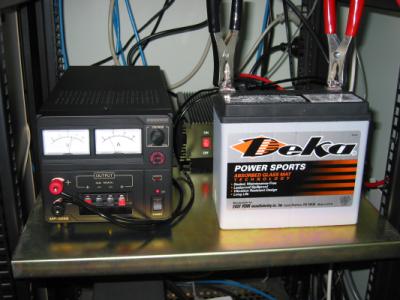
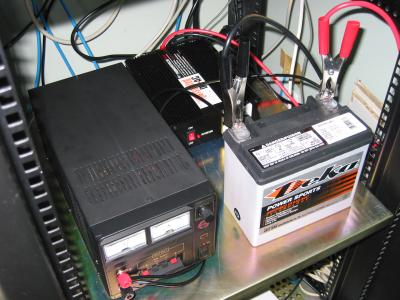
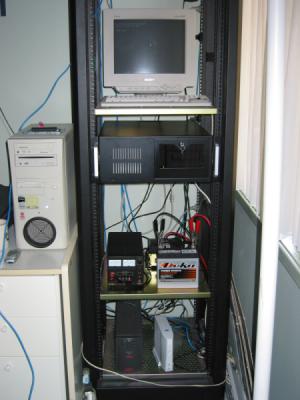
Post implementation notes: The original Enermax 350W power supply refused to work with the inverter and made it buzz as if it were overloaded. The computer didn’t power on at all. This occured on another computer also with the same model power supply. Switching to a Topower 370W power supply solved the problem. Don’t ask me how because I still can’t explain this.